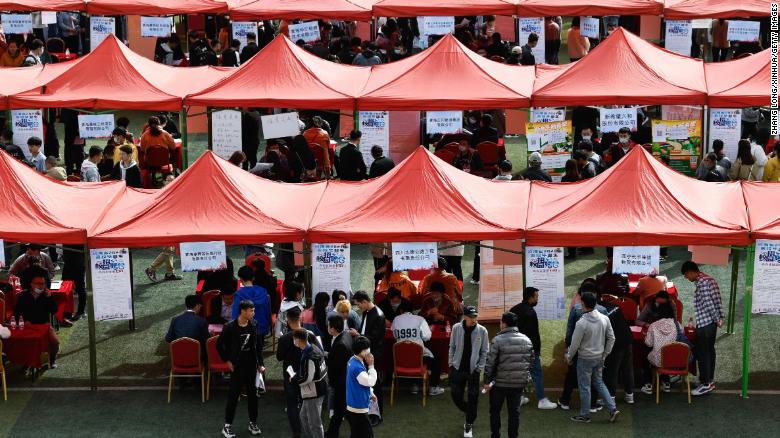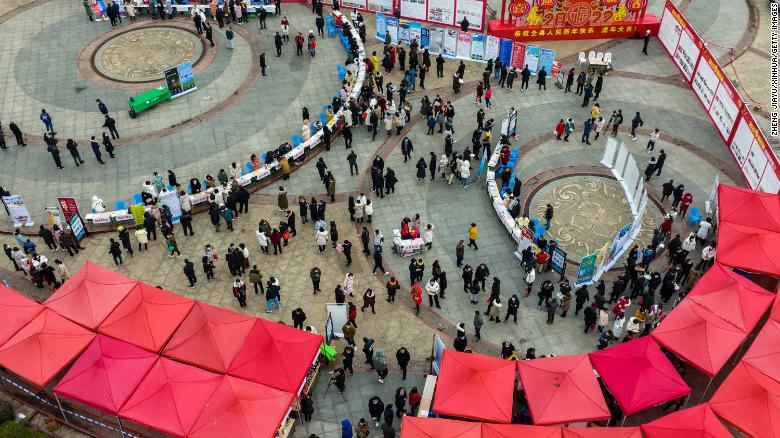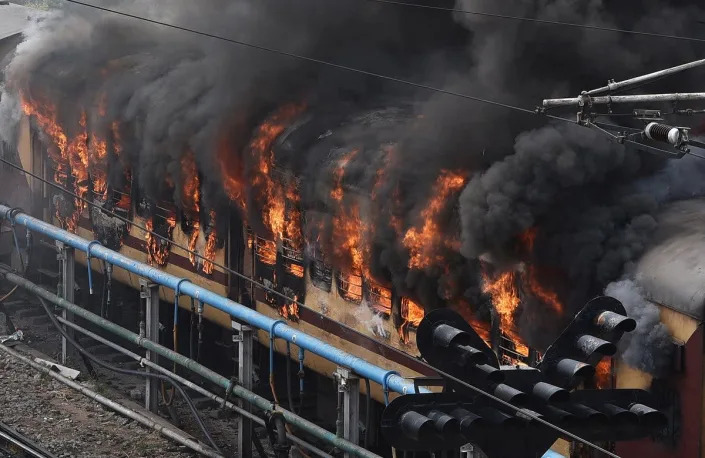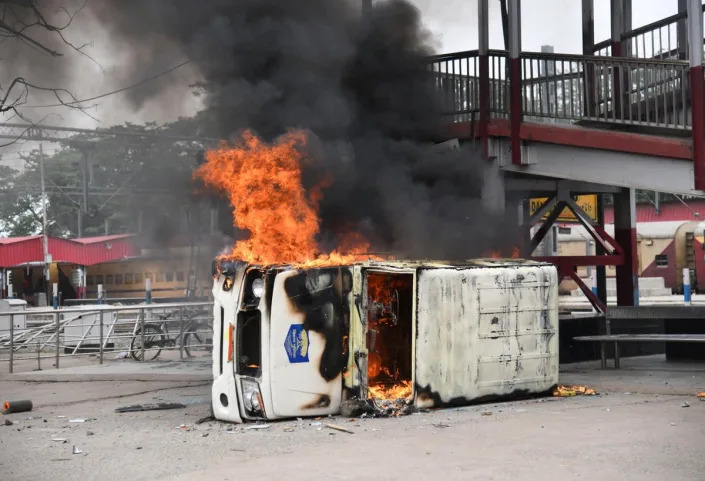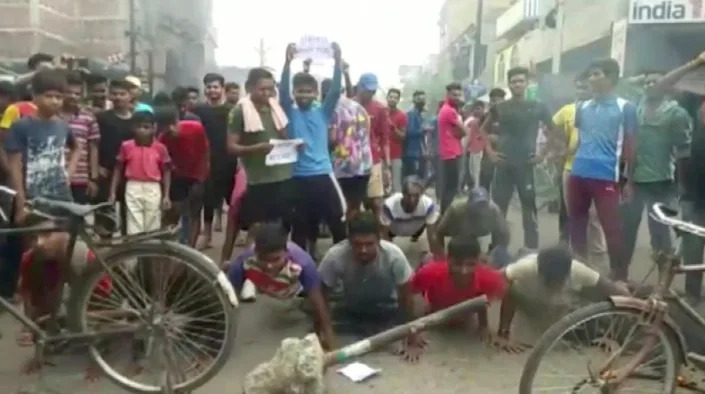
Fri, June 17, 2022
SAO PAULO (AP) — Before disappearing in Brazil’s Amazon rainforest, Bruno Pereira was laying the groundwork for a mammoth undertaking: a 350-kilometer (217-mile) trail marking the southwestern border of the Javari Valley Indigenous territory, an area the size of Portugal.
The purpose of the trail is to prevent cattle farmers from encroaching on Javari territory — and it was just the latest effort by Pereira to help Indigenous people protect their natural resources and traditional lifestyles.
While Pereira had long pursued these goals as an expert at the Brazilian Indigenous affairs agency, known as FUNAI, he worked in recent years as a consultant to the Javari Valley's Indigenous organization. That's because after Jair Bolsonaro became Brazil’s president in 2019, FUNAI began taking a more hands-off approach toward protecting Indigenous land and people — and the government unapologetically promoted development over environmental protection.
Deeply frustrated, Pereira left the agency and embarked on a more independent -- and dangerous -- path.
He was last seen alive on June 5 on a boat in the Itaquai river, along with British freelance journalist Dom Phillips, near an area bordering Peru and Colombia. On Wednesday, a fisherman confessed to killing Pereira, 41, and Phillips, 57, and took police to a site where human remains were recovered; some remains were identified Friday as belonging to Phillips, others are believed to belong to Pereira.
Pereira spoke several times with The Associated Press over the past 18 months, and he talked about his decision to leave FUNAI, which he felt had become a hindrance to his work. After Bolsonaro came to power, the agency was stacked with loyalists and people who lacked experience in Indigenous affairs, he said.
“There’s no use in me being there as long as these policemen and army generals are calling the shots,” he said by phone in November. “I can’t do my work under them.”
As a technical consultant for the Javari Valley’s association of Indigenous people, or Univaja, Pereira helped the group develop a surveillance program to reduce illegal fishing and hunting in a remote region belonging to 6,300 people from seven different ethnic groups, many of whom have had little to no contact with the outside world. He and three other non-Indigenous people trained Indigenous patrollers to use drones and other technology to spot illegal activity, photograph it and submit evidence to authorities.
“When it came to helping the Indigenous peoples, he did everything he could,” said Jader Marubo, former president of Univaja. “He gave his life for us.”

___
Like Pereira, Ricardo Rao was an Indigenous expert at FUNAI who, in 2019, prepared a dossier detailing illegal logging in Indigenous lands of Maranhao state. But fearful of being so outspoken under the new regime, he fled to Norway.
“I asked Norway for asylum, because I knew the men I was accusing would have access to my name and would kill me, just like what happened with Bruno,” Rao said.
Bolsonaro has repeatedly advocated tapping the vast riches of Indigenous lands, particularly their mineral resources, and integrating Indigenous people into society. He has pledged not to grant any further Indigenous land protections, and in April said he would defy a Supreme Court decision, if necessary. Those positions directly opposed Pereira’s hopes for the Javari Valley.
Before taking leave, Pereira was removed as head of FUNAI’s division for isolated and recently contacted tribes. That move came shortly after he commanded an operation that expelled hundreds of illegal gold prospectors from an Indigenous territory in Roraima state. His position was soon filled by a former Evangelical missionary with an anthropology background. The choice generated outcry because some missionary groups have openly tried to contact and convert tribes, whose voluntary isolation is protected by Brazilian law.
Key colleagues of Pereira’s at FUNAI either followed his lead and took leave, or were shuffled to bureaucratic positions far from the demarcation of protected lands, according to a recent report from the Institute of Socioeconomic Studies think tank and the nonprofit Associated Indigenists, which includes current and former FUNAI staff.
“Of FUNAI’s 39 regional coordination offices, only two are headed by FUNAI staffers,” the report says. “Seventeen military men, three policemen, two federal policemen and six professionals with no prior connection with public administration have been named” under Bolsonaro.
The 173-page report published Monday says many of the agency’s experts have been fired, unfairly investigated or discredited by its leaders while trying to protect Indigenous people.
In response to AP questions about the report’s allegations, FUNAI said in an emailed statement that it operates “with strict obedience to current legislation” and doesn’t persecute its officers.
___
On the day they went missing, Pereira and Phillips slept at an outpost at the entrance of the main clandestine route into the territory, without passing by the Indigenous agency’s permanent base at its entrance, locals told the AP.
Two Indigenous patrollers told the AP the pair had been transporting mobile phones from the surveillance project with photos of places where illegal fishermen had been. Authorities have said that an illicit fishing network is a focus of the police investigation into the killings.
Pereira wasn't the first person connected with FUNAI to be killed in the region. In 2019, an active FUNAI agent, Maxciel Pereira dos Santos, was shot to death as he drove his motorcycle through the city of Tabatinga. He had been threatened for his work against illegal fishermen before he was gunned down. That crime remains unsolved.
Pereira’s killing will not stop the Javari territory’s border demarcation project from moving ahead, said Manoel Chorimpa, an Univaja member involved in the project. And in another sign that Pereira's work will endure, Indigenous patrollers’ surveillance efforts have begun leading to the investigation, arrest and prosecution of law-breakers.
Before his career at FUNAI, Pereira worked as a journalist. But his passion for Indigenous affairs and languages — he spoke four — led him to switch careers. His anthropologist wife, Beatriz Matos, encouraged him in his work, even though it meant long stretches away from their home in Atalaia do Norte, and their children. More recently, they were living in Brazil's capital, Brasilia.
The Indigenous people of the region have mourned Pereira as a partner, and an old photo widely shared on social media in recent days shows a group of them gathered behind Pereira, shirtless, as he shows them something on his laptop. A child leans gently onto his shoulder.
In a statement on Thursday, FUNAI mourned Pereira's death and praised his work: “The public servant leaves an enormous legacy for the isolated Indigenous people's protection. He became one of the country's top specialists in this issue and worked with highest commitment."
Before the bodies were found, however, FUNAI had issued a statement implying Pereira violated procedure by overstaying his authorization inside the Javari territory. It prompted FUNAI's rank-and-file to strike, claiming that the agency had libeled Pereira and demanding its president be fired. A court on Thursday ordered FUNAI to retract its statement that is “incompatible with the reality of the facts” and cease discrediting Pereira.
Rubens Valente, a journalist who has covered the Amazon for decades, said Pereira's work became inherently riskier once he felt it necessary to work independently.
“Fish thieves saw Bruno as a fragile person, without the status and power that FUNAI gave him in the region where he was FUNAI coordinator for five years," Valente said. “When the criminals noticed Bruno was weak, he became an even bigger target.”
___
Maisonnave reported from Atalaia do Norte. AP writer Débora Álvares contributed from Brasilia.
___
Associated Press climate and environmental coverage receives support from several private foundations. See more about AP’s climate initiative here. The Associated Press receives support from the Walton Family Foundation for coverage of water and environmental policy. The AP is solely responsible for all content.

Joao Laet with Jordi Miro in Brasilia
Thu, June 16, 2022,

The United Nations as well as environmental and rights groups expressed outrage Thursday at the murder of British journalist Dom Phillips and Indigenous expert Bruno Pereira, which they linked to President Jair Bolsonaro's willingness to allow commercial exploitation of the Brazilian Amazon.
Veteran correspondent Phillips, 57, and Pereira, 41, went missing on June 5 in a remote part of the rainforest rife with illegal mining, fishing and logging, as well as drug trafficking.
Ten days later, on Wednesday, a suspect named Amarildo da Costa de Oliveira took police to a place where he said he had buried bodies near the city of Atalaia do Norte, where the pair had been headed.
Human remains unearthed from the site arrived in Brasilia on Thursday evening for identification by experts, with members of the federal police seen carrying two brown coffins through a hangar. Official results are expected next week, according to local media.
Federal police said Thursday that traces of blood found in Oliveira's boat belonged to a man, but not Phillips. Further analysis will be necessary to determine if it was that of Pereira.
There is still much to clarify in the case, including a motive and the circumstances surrounding the killings, apparently carried out by firearm.
Late Wednesday, the federal police chief of Brazil's northern Amazonas state said there was "a 99 percent probability" the unearthed remains corresponded to the missing men.

The UN human rights office said Thursday it was "deeply saddened by the information about the murder" of the two men.
"This brutal act of violence is appalling and we call on state authorities to ensure that investigations are impartial, transparent and thorough, and that redress is provided to the families of the victims," spokeswoman Ravina Shamdasani said in Geneva.
Phillips, a longtime contributor to The Guardian and other leading international newspapers, was working on a book on sustainable development in the Amazon with Pereira as his guide, when they went missing.
Pereira, an expert at Brazil's indigenous affairs agency FUNAI, had received multiple threats from loggers and miners with their eye on isolated Indigenous land.
- 'Heartbroken' -
Phillips' family said in a statement they were "heartbroken" by the discovery of two bodies Wednesday, which they took as confirmation that the pair had been killed.
Beatriz Matos, the wife of Pereira, wrote on Twitter that "now that the spirits of Bruno are walking through the jungle and scattered among us, our strength is much greater."

The Javari Valley where the men went missing -- an area near the borders with Peru and Colombia -- is home to about 20 isolated Indigenous groups where drug traffickers, loggers, miners and illegal fishermen operate.
Greenpeace Brazil said the deaths were "a direct result of the agenda of President Jair Bolsonaro for the Amazon, which opens the way for predatory activities and crimes... in broad daylight."
Bolsonaro, who took office in 2019, has pushed to develop the Amazon, the world's largest tropical rainforest.
He drew fresh criticism Wednesday for saying Phillips was "disliked" for his reporting on the region and should have been more careful.
On Thursday, the far-right president tweeted "our condolences to the families" of the men.
In Brussels, seven Brazilian Indigenous leaders deplored the climate of violence and "impunity" in the Amazon in front of the European Union headquarters.
One of them, Dinamam Tuxa, told AFP that "Bruno and Dom Phillips were victims of government policies."
- 'Political crime' -
Shamdasani said attacks and threats against activists and Indigenous people in Brazil were "persistent" and urged the government to step up protections.

The Univaja association of Indigenous peoples, which had taken part in the search for the missing men, denounced the suspected killings as a "political crime," while the Brazilian Association of Investigative Journalism said "the president and his allies have become protagonists of attacks on the press" uncovering environmental crimes.
"People dead for defending Indigenous lands and the environment. Brazil cannot be that," added ex-president Luiz Inacio Lula da Silva, who will face Bolsonaro in October elections.
Investigations continue to look into the motive for the crime as well as the role played by Oliveira and fellow suspect Oseney da Costa de Oliveira.
On the ground, civil police carried out three search warrants, but no arrests were made. Authorities said they had so far been unsuccessful in finding the boat in which Phillips and Pereira were traveling when they were last seen, an AFP journalist confirmed.
Brazilian media report there may be three more people involved. Police have not ruled out more arrests.
jm/app/dga/mlr/bfm/dw








Brazil Amazon Police navigate the Itaquai River during the search for British journalist Dom Phillips and Indigenous affairs expert Bruno Araujo Pereira in the Javari Valley Indigenous territory, Atalaia do Norte, Amazonas state, Brazil, Friday, June 10, 2022. Phillips and Pereira were last seen on Sunday morning in the Javari Valley, Brazil's second-largest Indigenous territory which sits in an isolated area bordering Peru and Colombia. (AP Photo/Edmar Barros)








